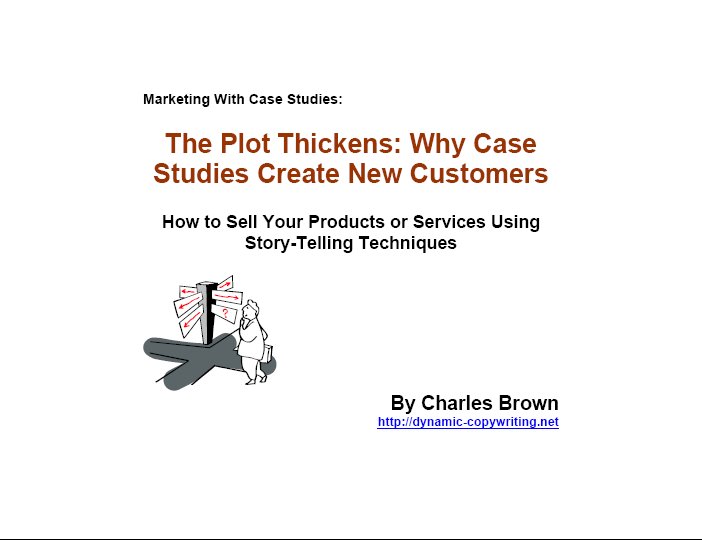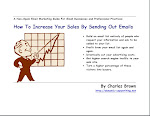One of the greatest treasure troves full of knowledge on all things related to marketing, advertising and copywriting is David Ogilvy's book, "Ogilvy On Advertising." He is a legend in the field and was the creative genius behind more successful ad campaigns than anyone can keep track of. (And by the way, if you are in marketing, copywriting or advertising, and have never HEARD of David Ogilvy, you really should consider another line of work).
Okay, I know I get a little full of myself sometimes, so let's get down to what this article is all about.
Is Direct Response Advertising Right?
Let me quote from a section in his book called, "The lessons of direct response."
"For all their research, most advertisers never know for sure whether their advertisements sell. Too many other factors cloud the equation. But direct-response advertisers, who solicit orders by mail or telephone (and nowadays by the internet), know to the dollar how much each advertisement sells. So watch the kind of advertising they do. You will notice important differences between their technique and the techniques of general advertisers. For example:""General advertisers use 30 second commercials. But the direct response fraternity have learned that it is more profitable to use two-minute commercials. Who, do you suppose, is more likely to be right?"
"General advertisers broadcast their commercials in expensive prime time when the audience is at its peak. But direct response advertisers have learned that they make more sales late at night. Who do you suppose, is more likely to be right?"
"In their magazine advertisements, general advertisers use short copy, but the direct response people invariably use long copy. Who do you suppose is more likely to be right?"
Results vs Creativity For Creativity's Sake
There. It is one thing for me to proclaim the benefits of direct response techniques and how they allow a marketer to measure and test the effectiveness of their ads, websites and every element of their copy. But to hear it from David Ogilvy is like having the Word brought down from the mountain.
Ogilvy also believes that every copywriter should start his career by spending two years in direct response. I agree. Every day I see websites and ads that are creative masterpieces, but have little effectiveness in selling.
Common errors I see are: too much white space, headlines that appeal only to curiosity but not to the customer's "what's in it for me?" motivation, no call to action, and too much design and too little copy.
Ogilvy's Best Work
Ogilvy concludes his thoughts on imitating direct response, by saying:
Do I practice what I preach? Not always. I have created my share of fancy campaigns, but if you ask which of my advertisements have been the most successful, I will answer without hesitation, that it was the first ad I wrote for industrial development in Puerto Rico. It won no award for "creativity" but it persuaded scores of manufacturers to start factories in that poverty-stricken island.
Advertising, marketing creating business websites are not art forms. They are business strategies that are intended to bring in new clients, new business and make sales. Even David Ogilvy tells us that we forget that to our peril.
COPYRIGHT © 2008, Charles Brown
The Wisdom of Sub-Dividing Your Lists
0 comments Posted by Charles Brown at Wednesday, March 19, 2008Hopefully I have been preching to the choir in all my many articles urging marketers and site owners to use their websites as “lead-generation machines,” to gather email addresses and build your lists of prospective and existing clients. I hope as well you have been doing just that for a long enough time that you get a little irritated with me when I harp on the subject again and again.
But have you been subdividing your list into specialized lists that allow you to target your market more and more precisely?
For example, have you subdivided you prospects from those who have actually bought from you at least one time in the past?
Also, have you subdivided your prospects based on what types of products or services they are most likely to buy from you in the future?
Other ways to subdivide your list is to distinguish geographic areas, b2b prospects vs. consumers, industry fields, income levels, business sizes, and on and on. Some of these distintions will make sense to your business and others will not, but always be on the lookout for ways you can present highly specialized offerings to your customers and prospects.
A very easy way to do this is to continually offer new opt in opportunities to the people who are on your list. To do that, you must create new enticements that will appeal only to certain subscribers on your list. In other words, let your subscribers self select themselves and tell you what sub categories they are on based upon what interests them.
If your list consists of small businesses and large corporations (but you have something to offer both), create free information reports or CDs that will appeal only to the executives of large organizations on your list. At the same time, create another product that will appeal to the small business executive.
You then create additional autoresponder campaigns for both groups (I am personally very happy with Traffic Wave, which allows me to create an unlimited number of campaigns with an unlimited number of letters, for a monthly price of $17.95).
These multiple lists then enable you to make offers that are attractive to the small company executive that would just elicit a yawn from the large company executive (and visa versa). Moreover, the more precisely you target your customers, the more effective your sales messages will inevitably be.
COPYRIGHT © 2008, Charles Brown
Do You Know Why People Visit Your Site?
0 comments Posted by Charles Brown at Sunday, March 16, 2008Hopefully you have a system in place to capture data on how visitors arrived at your website. This is very important information, because it tells you if you are doing the right things to get more visitors and if you are satisfying the problems and questions that brought these people to your doorstep.
For example, if you are using a tool like Google Analytics, you can track all the search terms (or "keywords") people typed into the various search engines like Google, Yahoo, AOL, etc that led them to your site.
What does this information tell you? Well what if the search engines are sending people who want something altogether different from what you offer? This happens all the time when the content on the site uses key terms that different meanings in different contexts.
If this happens, don't regard it as a total loss. Often the problem can be fixed by a small tweak. For example if your company sells Red Delicious Apples, and search engines are sending people who want Apple Computers, just go back through your content and add "Red Delicious" to the word "Apple" where ever it is found on your site.
But this data may also give you the opportunity to write more content on those same keywords (search terms) if they ARE in line with what business you are in. This would enable you to get MORE of this kind of traffic, but instead of getting it by dumb luck, you would be getting it by design.
When you decide on a list of keywords / search terms you want to target, you can have all your content written to emphasize these terms so that the search engines will give you higher rankings. After all, you won't get too much traffic if you are on the 85th page of a term's search results on Google.
But if over time you write more and more content that diligently features these keywords, you will find your site moving up in those search engine rankings.
Not only that, but the people who find your site in this way will be targeted potential customers, because those search terms they typed represent problems they want solved, or questions they want answers to. If you are in the business of solving those problems or answering those questions, these visitors are gifts.
So make sure your web content is written to emphasize specific keywords or search terms that pertain to the business you are in. Use analytic tools to make sure your keywords are working and to find new search terms that are getting people to your site. And finally, write more content emphasizing these search terms so that your site will get more of these specific kinds of visitors.
COPYRIGHT © 2008, Charles Brown
Labels: keywords, lead generation, seo writing
How Ashley Alexandra Dupre Became a Millionaire in Two Days
0 comments Posted by Charles Brown at Saturday, March 15, 2008freelance copywriter, Sales letters, ad writer, web content writer, white papers
For those of you just coming out of a coma, Ashley Alexandra Dupre, is the high-priced call girl who is at the center of New York Governor Eliot Spitzer's recent downfall and resignation. She is also a newly-minted millionaire.
It took all of two days for her to go from a call girl to having a bank account of over $1.4 million dollars.
It seems Ms. Dupre is also an aspiring singer, who had two singles available online. When the news hit about her liaison with the governor, the internet gold rush was on to find out all things "Ashley Alexandra Dupre," and people downloaded her songs by the millions.
And although she earned what seems a modest $.69 per download, millions of people downloaded her instant hits before the news cycle began to wane.
So are there lessons here for those of us who market other "products?"
As a matter of fact, yes.
First, although few companies would purposely want to be in the eye of such a publicity hurricane as Ashley Alexandra Dupre finds herself, publicity can reach many, many more people than paid-for marketing efforts.
One way to get free publicity is to piggyback onto a hot news story (as I am shamelessly doing right now in this article).
My favorite, and most dog-eared book on publicity is Marcia Yudkin's 6 Steps To Free Publicity. Simply put, Marcia is a genius, and I say that without reservation. This book will show you how to look for publicity opportunities and how to ride the wave along with them.
Second, appeal to the very human impulse to instant gratification. Ashley Alexandra Dupre had her songs on the internet in a downloadable format, and you can do the same thing.
It is simply a matter of "packaging" your knowledge and expertise in the form of information products. These can be ebooks, tip sheets, white papers, downloadable audio or video files or software programs.
Moreover, your downloadable product can either be free enticements to get your website visitors to opt into your email list, or you could charge for them. (you can already see how quickly $.69 adds up when tied to a lot of publicity).
Riding a publicity wave and offering downloadable info products can be a powerful marketing strategy. I'm sure Ms. Dupre never saw this coming, but if you are nimble enough to tie what you do to a hot news story, you can reap much of the same benefits (without having to hide your head in public).
COPYRIGHT © 2008, Charles Brown
Labels: info products, publicity


